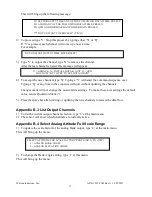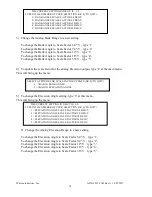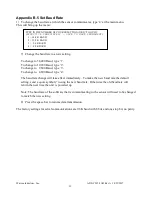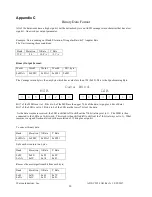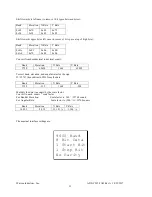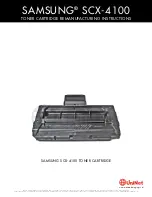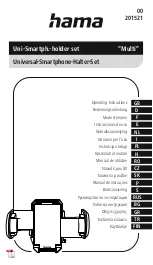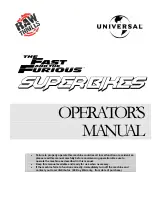
Watson Industries, Inc.
ADS-C232-3AD Rev A 10/25/2017
6
intended for use over periods of a few minutes at a time. This mode provides similar sensor
information as in normal operation mode with the following differences:
Bank and Elevation are obtained directly from the rate gyros.
Angular Rate Sensors are not close-loop bias corrected.
Free mode can be accessed through command mode (See Appendix B). Note that free mode is
never a default setting. It must be re-selected when re-powering the unit. The user should not enter
free mode until after the ADS is initialized and its readings are stable.
Interface
RS-232 Output Format
The standard RS-232 output is received from the 12-pin connector. The digital output pin map can
be found in the Connections section of this manual.
The RS-232 output consists of a string of
decimal ASCII characters sent asynchronously at regular intervals. By default, the string is sent at
9600 baud with eight data bits, one stop bit and no parity. The RS-232 signal is referenced to signal
ground. The number of strings sent per second depends on the baud rate and the output format. The
maximum rate is 250 strings per second. The contents of a typical string are formed as follows:
(See Appendix B for information on how to change the data string.)
1.
A single letter and a space used to indicate the start of the data string. The letter “I”
indicates the start of an inertial data string. The letter “R” indicates the start of a Reference
data string. If the letter is in lower case (“i” or “r”), an error over-range condition is
indicated (see below).
2.
A seven character string representing the bank angle starting with a space, then a “+” or a
“-“, followed by three digits, a decimal point and one digit and for up to ±179.9 degrees.
3.
A six character string representing the elevation angle starting with a space, then a “+” or a
“-“, followed by two digits, a decimal point and one digit for up to ±89.9 degrees.
4.
A six character string representing the X axis angular rate starting with a space, then a “+”
or a “-“, followed by two digits, a decimal point and one digit for up to ±99.9
°
/second.
5.
A five character string representing the Y axis angular rate starting with a space, then a “+”
or a “-“, followed by two digits, a decimal point and one digit for up to ±99.9
°
/second.
6.
The string is terminated by a carriage return. There will then be a short interval with no
data transmission before the next string begins.
Example:
I +002.5
-05.0
+00.9
-00.4 <CR>
(1)
bank
angle
(2)
elev.
angle
(3)
X axis
Rate
(4)
Y axis
rate
(5)
(6)
space
space
space
space

















